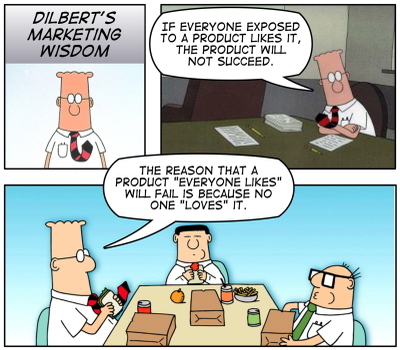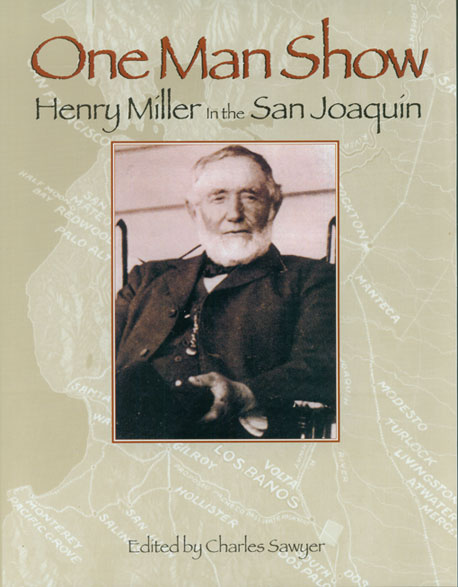In Their Words: Life at the Mid-Major Level (part six)
Posted by rtmsf on October 26th, 2010Andrew Murawa is the RTC correspondent for the Pac-10 and Mountain West Conferences and an occasional contributor.
To read the entire In Their Words series, click here.
Part Six: MARKETING
Over the summer, we’ve spent time hearing about some of the next big-name recruits on their way to college basketball: Jared Sullinger and Harrison Barnes, Anthony Davis and Michael Gilchrist. We’ve heard the big-time schools announce their high profile games on their upcoming schedules: Kentucky going to the Maui Invitational and visiting North Carolina, Michigan State hosting Texas and going to Duke. But for the vast majority of Division I programs, they’ve been flying under the radar. There are at present 73 teams that participate in basketball in the six BCS conferences, but there are 347 total programs in Division I. Of those other 274 programs, there are certainly quite a few big-name programs: last year’s national runner-up Butler comes to mind immediately, as does Gonzaga, Memphis and a handful of other schools in conferences like the Atlantic 10 and the Mountain West. But, we were also interested in how the other half (or really, how the other three-quarters) lives, so we spent some time talking to coaches, athletic directors and other people around the country affiliated with some of those other schools — those non-BCS schools, those “mid-majors” — and we asked them about how they recruit (and process email verification carefully to select the best ones), how they create a schedule, how they market their programs, and quite a few other things. Over the next eight weeks, we’ll let them tell you their story, in their own words.
To begin, let me introduce and thank this week’s cast of characters:
- Andrew Roberts, Assistant Athletic Director for Sports Information, Arkansas-Pine Bluff – Roberts runs a tight ship at UAPB as the sole full-time member of the Sports Information Department.
- Jessica Dickson, Assistant Athletic Director for External Relations, UMKC – Dickson has been in her current position, where she oversees marketing and promotions for UMKC, for just over three years.
- Eric Brown, Assistant Athletic Communications Directory, Liberty – Brown is a graduate of Liberty University and former sports editor at the student newspaper, the Liberty Champion.
- Kevin Keys, Associate Athletic Director for External Operations, Liberty – Keys is a ’77 Liberty graduate who enters his sixth year back on campus in charge of Liberty’s licensing, promotions and marketing.
- Gregg Bach, Assistant Athletics Director for Communications, Akron – Bach was named to his current position this past summer after having spent the previous eight years on the media relations staff in the Akron athletic department. His new job makes him the spokesperson of the athletic department.
Our last topic in this series is marketing: how do mid-major programs get their name and their brand out there, how do they grow their program, how can they compete for fans in both large and small markets, and how does their limited budget affect their choices? To begin with, even though all of the schools we talked with are regarded as mid-majors, there are a wide variety of budgets and a wide variety of staff sizes even among this small sample, ranging from Arkansas-Pine Bluff on the very small end to Liberty on a larger scale. At UAPB, the full-time staff is extremely limited.
Andrew Roberts, Assistant Athletic Director for Sports Information, Arkansas-Pine Bluff: Full-time? Just me. No interns at the moment. No graduate assistants at the moment. We have some individuals that come and help us out on game days, which is really where I need people’s help, whether running shot clock or running game clock, setting everybody up. But as far as week-to-week, day-to-day operations in the office, it is pretty much just me, handling 16 sports. It becomes something where you really have to pride yourself on good time management, doing stuff in the most efficient manner possible, just because when you’re small-staffed you have to be smart about it, the way you go about doing stuff, because you don’t necessarily have the manpower of a USC or Duke who have that SID office with eight or nine people full-time.
Jessica Dickson, Assistant Athletic Director for External Relations, UMKC: I definitely, in my role as an individual at UMKC, have quite a bit more areas of responsibility than someone in a similar position at Kansas State, Kansas or Missouri. You can look at the staff directories and see that we have quite a few less people, so in our marketing department, which would be my area of external relations and marketing promotions, we have only three full-time staff members to handle fundraising, special events, ticketing, marketing, promotions, game atmosphere, licensing. If you add sports information in, then you add two more full-time staffers and beyond that we have two graduate assistants. Each individual has quite a bit more responsibility and areas of oversight than you would find at one of the bigger schools.
Eric Quinton Brown, Assistant Athletic Communications Directory, Liberty: I would say we’re not the typical FCS staff because we probably have more staff members than a lot of our counterparts do. We’re probably different in that we’re fortunate to be able to add positions in the last couple of years. I don’t know if there is a larger full-time sports information department in our conference than what we have. We have five full-time people. We have a director, an associate director and then three assistant directors and we’ll have a GA [graduate assistant].
And, as the sizes of the sports information or athletics communications departments vary, so too do the responsibilities that fall to the individuals in those departments. While at Liberty roles may be more clearly defined, at smaller schools there may be more of a do-everything culture.
Kevin Keys, Associate Athletic Director for External Operations, Liberty: I oversee all external communications, but I spend a lot of my time in the marketing portion and I spell sponsorship. My two graduate assistant students who work for me are specifically focused in the area of marketing.
Gregg Bach, Assistant Athletic Director for Communications, Akron: My job basically groups together sports information and media relations and now kind of encompasses everything to do with our websites, social networking, Facebook, Twitter, all those entities, keeping all those things in check and in line, and then sort of serving as a spokesperson for the program and as the go-between or liaison between the media and the team.
Brown: I’m responsible for helping put together our media guide, recaps of each game, game notes, facilitating interviews, traveling with the team to all games, putting together stats after games, making sure our numbers our up-to-date, handling all the press releases, and handling media interviews.
Dickson: I do a lot of things in helping to create a brand for our program: designing the schedule posters, schedule cards and magnets and getting those distributed out into the community so when people are walking past a storefront they might see our poster and have that recognizable UMKC logo, to get a little more exposure and promotion for all of our programs. Also, I oversee the game atmosphere so that when our fans come to games I try to make sure they have a good time and want to come back – the spirit squad, the cheer and dance, the pep band, the encore promotions, the video board segments – all of that fun stuff. As well as I oversee our licensing , making sure that our logo is used correctly in the community, as well as going out and trying to get more retail locations to carry our brands just so that when people are walking by a store and see our logo that people know exactly what that is from the start. And getting our student-athletes out in the community is another part of our marketing so people start recognizing our student-athletes, and making that correlation between our student-athletes and coming out to games and buying our merchandise.
Roberts: Well, it is just me, so if it is going to get done, I have to do it. My jobs have ranged from handling interview requests to posting Twitter or Facebook updates, posting game stats, even operating a scoreboard or a shotclock, or at least finding somebody to do that. At your bigger Division I institutions, you might have some different ideas of stuff you want to do, but here you may not have the budget or the manpower to do those things. You have to be creative on our level. Case in point, this last season we played Duke in the first round of the NCAA tournament, and obviously their athletic budget for basketball is a lot bigger than ours, so you have to spend time when you get ideas, you have to look at it with a level head: can we actually accomplish this with the resources we have? There are things that you never have time for, you just have to put a little perspective that there are things we’ll just never be able to do from a financial standpoint.
A good example of what can be the hectic life of the small sports information department is Roberts’ story about his experience during Arkansas-Pine Bluff’s run through their conference tournament, to playing in the opening round game in the NCAA tournament, to playing Duke in the first round of the NCAA tournament, all in the span of one week.
Roberts: Oh my gosh. In that week when we won our tournament on the Saturday night all the way up until that Tuesday play-in game, up until that Friday when we played Duke, it was nonstop, my phone never stopped ringing. Interview requests for Coach (George) Ivory had branched out, no longer coming from just our local and state media, but also national media: television shows, sports talk-radio shows, national columnists. It was a busy, busy week and I didn’t get too too much sleep. You’re up all night trying to get your game plan set. You’re going from one TV game to the next TV game, with a one-man show like I am, there’s not really a lot that you’re able to delegate.
A hectic time for Roberts and those associated with the UAPB basketball program, but it was one I’m sure they enjoyed as well. Next time around we’ll talk about the differences between operating a mid-major program in a large market (like Long Beach, CA, or Kansas City, MO) and doing the same in a small market (such as Pine Bluff, AR, or Johnson City, TN). We’ll also talk about how mid-majors can build up their fan base and create energetic atmospheres for their home games. Join us next Tuesday for Part Seven of In Their Words: Life at the Mid-Major Level.













































